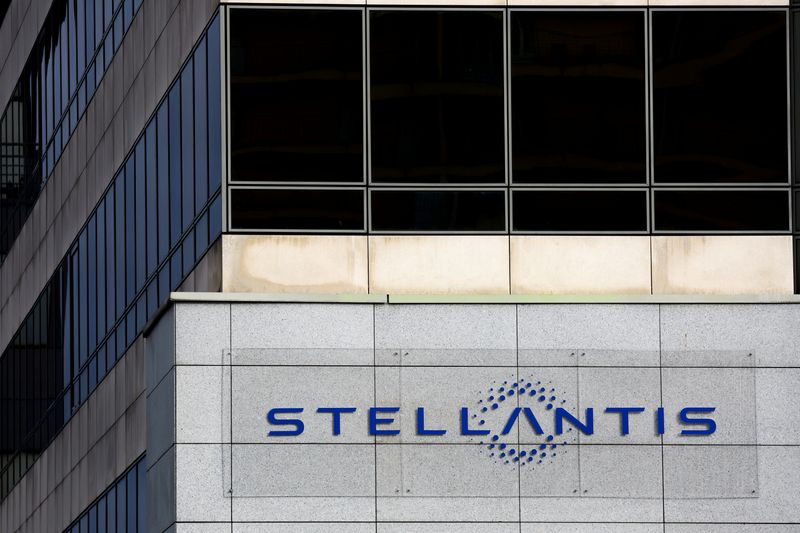S&P 500 slips, but losses kept in check as Nvidia climbs ahead of results
Investing.com -- Stellantis (BIT:STLAM) on Friday reported a 9% year-over-year decline in global vehicle shipments for the first quarter of 2025, citing production slowdowns in North America and Europe tied to extended holiday downtime and vehicle model transitions.
The automaker estimated consolidated shipments at 1.2 million units for the quarter ending March 31, down from the same period a year earlier.
North America and Enlarged Europe were the main contributors to the drop, while South America posted gains that helped offset declines elsewhere.
In North America, shipments fell by about 82,000 units, representing a 20% decrease from the first quarter of 2024.
Stellantis pointed to lower production in January due to extended holiday downtime, as well as the initial ramp-up of the refreshed 2025 Ram 2500 and 3500 heavy-duty trucks.
Despite the shipment decline, retail demand showed signs of improvement. Sales of the Jeep Compass, Grand Cherokee and Ram 1500/2500 each rose more than 10% year over year, and March new retail orders reached their highest level since July 2023.
In Enlarged Europe, shipments dropped by approximately 47,000 units, an 8% decline from the prior year.
The Netherlands-based company attributed two-thirds of the drop to temporary gaps during the transition to new A- and B-segment models, following the discontinuation of prior-generation vehicles in the second half of 2024. The remaining decline was due to lower light commercial vehicle volumes.
Stellantis’ EU30 market share rose to 17.3% during the quarter, a 1.9 percentage point increase from the fourth quarter of 2024, supported by launches of models such as the Citroën C3 Aircross, Opel Frontera and Fiat Grande Panda.
Shipments across Stellantis’ “Third Engine” markets — which include South America, Middle East & Africa, China, and India & Asia Pacific — increased by 13,000 units, or 4% year over year.
South America led the growth with a 19% increase, benefiting from higher industry volumes in Brazil and Argentina. Stellantis said it maintained its market leadership in the region.
In contrast, shipments fell 15% in the Middle East and Africa, largely due to ongoing import restrictions in Algeria, Tunisia and Egypt.
Stellantis said dealer inventory levels remained stable during the quarter, while new and refreshed products helped improve order intake across several key markets.
